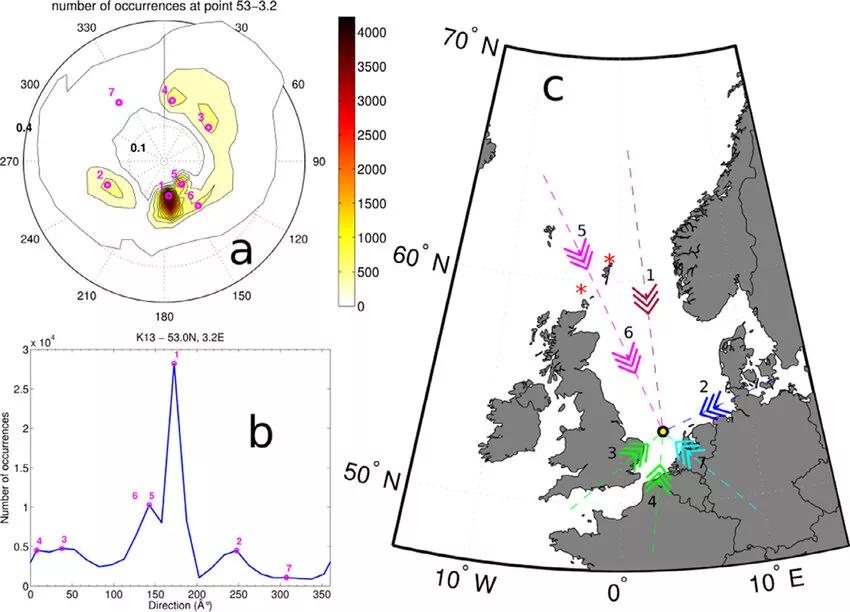Wave spectra partitioning and long term statistical distribution
A new method is presented for a physically based statistical description of wind wave climatology. The method applies spectral partitioning to identify individual wave systems (partitions) in time series of 2D-wave spectra, followed by computing the probability of occurrence of their (peak) position in frequency–direction space. This distribution can be considered as a spectral density function to which another round of partitioning is applied to obtain spectral domains, each representing a typical wave system or population in a statistical sense. This two-step partitioning procedure allows identifying aggregate wave systems without the need to discuss specific characteristics as wind sea and swell systems. We suggest that each of these aggregate wave systems (populations) is linked to a specific generation pattern opening the way to dedicated analyses. Each population (of partitions) can be subjected to further analyses to add dimension carrying information based on integrated wave parameters of each partition, such as significant wave height, wave age, mean wave period and direction, among others. The new method is illustrated by analysing model spectra from a numerical wave prediction model and measured spectra from a directional wave buoy located in the Southern North Sea. It is shown that these two sources of information yield consistent results. Examples are given of computing the statistical distribution of significant wave height, spectral energy distribution and the spatial variation of wind wave characteristics along a north–south transect in the North Sea. Wind or wave age information can be included as an extra attribute of the members of a population to label them as wind sea or swell systems. Finally, suggestions are given for further applications of this new method.
J. Portilla-Yandún, L. Cavaleric, G. Ph. Van Vledder
- Ocean Modelling, volume 96

